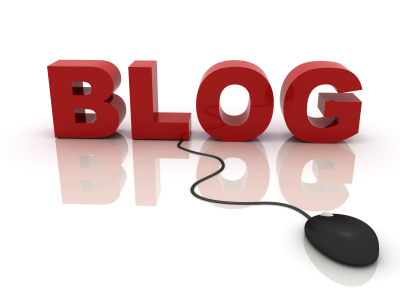France, 12 January 2018
France, 14 December 2017
We urge for a stronger lobby to end the killing of pets in pounds and refuges in France in this open letter
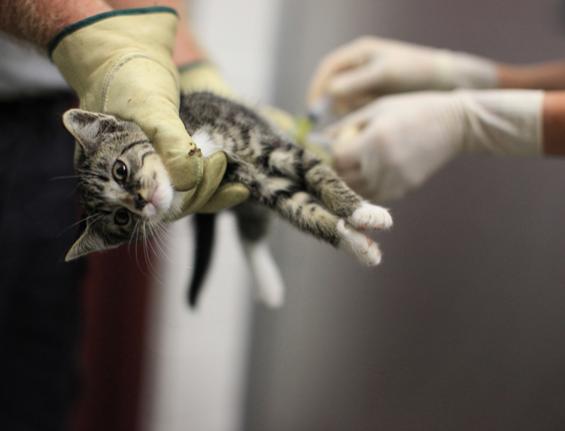
France, 10 December 2017
Music: Original Rags from Rag's Rag http://www.ragsrag.com/pr/pr.html
Adventures around a catflap (and a new tabby longhaired cat we called Mychka) featuring Gamey, Bianca, Baju, Jahe, Misty, Minous, Nickey, César, Flash, Dorian, I-paw and Maggy
France, 9 December 2017
Tea Time with Kwik and Kwak
France, 9 December 2017
Fusion vegan meal of mashed potatoes and cabbage (dutch) and British pie ...
... made with our new pie maker bought in the Netherlands. For photo's showing how we made this pie please join us on facebook

France, 2 December 2017
Letter about the culling of pigeons
To be able to control the number of pigeons the maire of this little town payed 4.700 euros to a hunter to eradicate the pigeons. Again we picked up our pens and wrote a letter to this maire to say that sterilisation is a successful alternative more and more used in France. Exemples: the town of Nice and Saint-Dié-des-Vosges. You'll find the letter on the Nala site (in french)
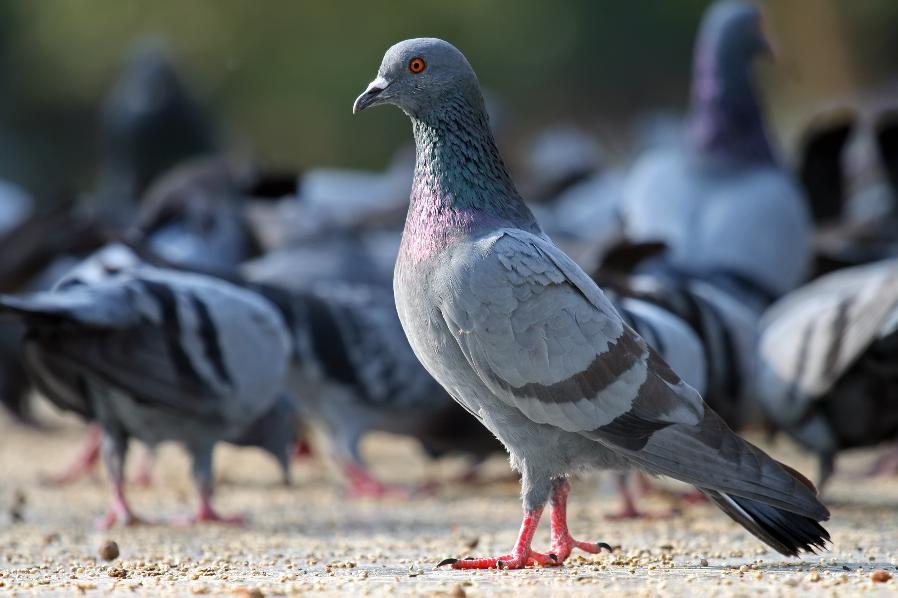
France, 29 November 2017
Nigel (left) and his twin brother Barry successfully finished the La Rochelle Marathon today on "plant power" ;-)

France, 23 November 2017
French hunters ask for derogation to kill and eat chaffinches in Les Landes, the south of France
We are disgusted by this initiative of the federation of hunters and could not resist to send a letter to the french minister of the environment. You can read the letter (in french) here on the Nala site.
Photo: Wikipedia
Update of 12 January 2018: The Ministry has sent us a reply saying that the derogation/exemption was rejected. We applaud this decision and we thank the Ministry!
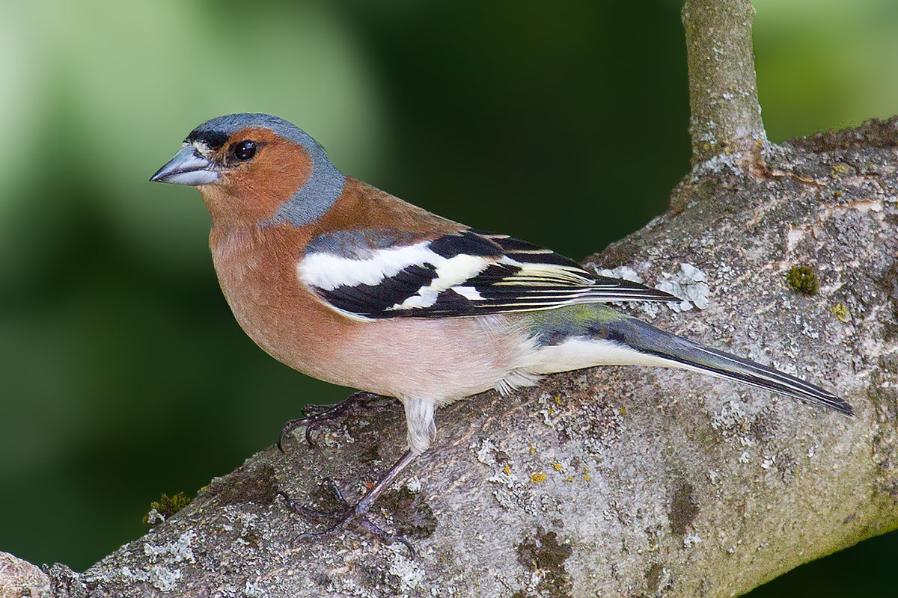
France, 21 November 2017
Euthanasia in pounds and refuges too high in France
Today we sent a letter to the french minister of agriculture in response to the publication of statistics of cats and dogs euthanized in french pounds and refuges in 2016. The letter is in french. You can read it on the Nala site here
Photo's of Mary Shannon Johnstone “Breeding Ignorance”

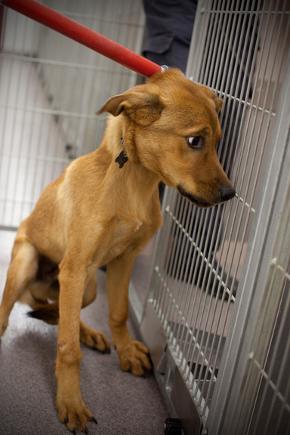
France, 14 November 2017
Hunting with hounds and horses in France
Today we prepared a letter to the French President and the Minister of Environment /Ecology to ask for a prohibition of the hunt on deer, bore, hare etc. Accidents happen too often, stags look for refuge and are killed in people's gardens or even homes, road accidents occur. The practice is cruel and old-fashioned . You can read the letter published (in french) on the site of the association NALA 85480 here : http://www.nosamislesanimaux.com/lettre-chasse-%C3%A0-courre.php
France, 5 November 2017
Ukkie our serama chicken in intensive care. She is suffering from egg peritonitis since she was young.
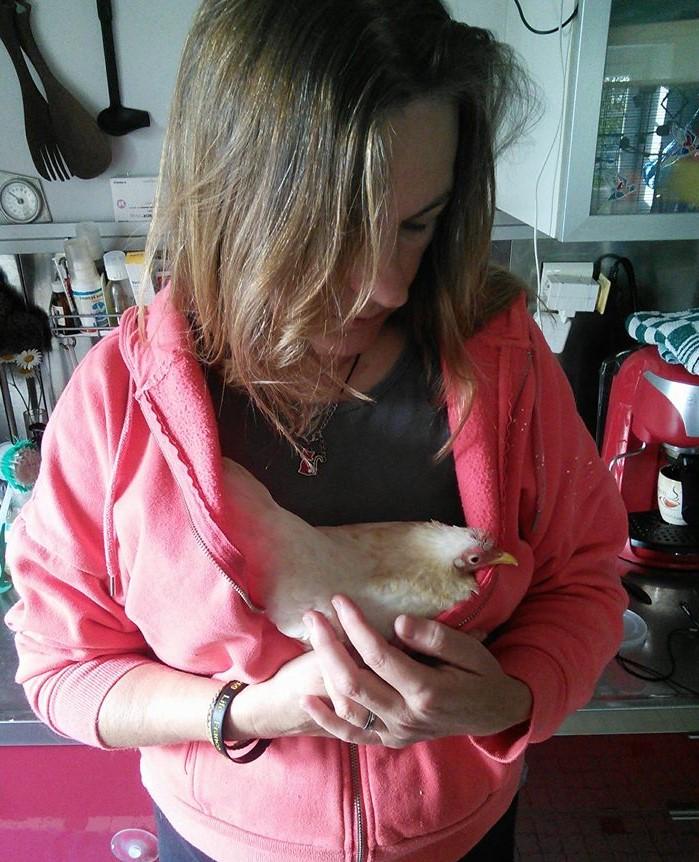
France, 5 November 2017
Meat replacements ? YES!!!!
We published a new article on this site in which we explain why we approve of meat replacements. Read it here
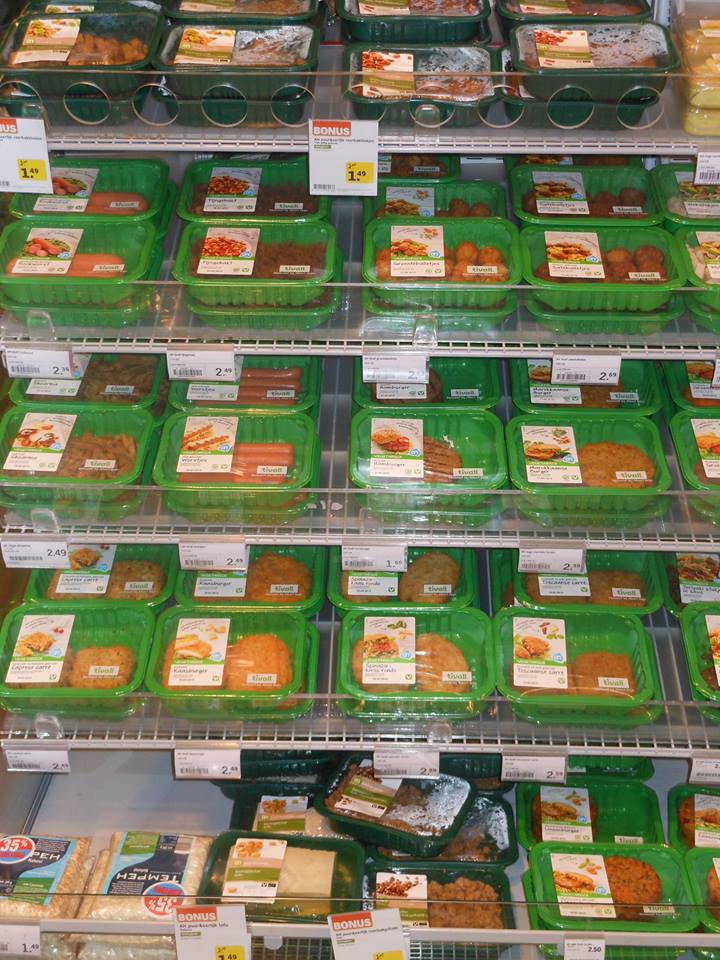
France, 1 November 2017
World Vegan Day
France, 20 October 2017
Scampy
Our little rabbit Scampy has joined her brother in paradise this morning. She suffered from cancer. She died in my arms on the way to the vet for her final injection.
France, 18 Octobre 2017
Highlight of our third vegan trip this time to the Gironde department
France, 16 October 2017
Spikey
Our little hedgehog protégé, has gone back to the wild. He was not happy in his enclosure (an old chicken run with a lot of space) and found a hole in the mash, so he escaped. We wish him all the luck he needs with one eye. Spikey have a long and happy life!! At least now you can find yourself a little female friend ;-).
France, 14 October 2017
Jahe and Dorian, the inseparables.
France, 2 October 2017
Rocky
Rocky tells you his story and the story of his dad, a little chick saved from a factory farm in 2004. For more fowl films please have a look on fowlfaces.com
France, 17 September 2017
A nice sunny september day for our 2-legged friends
France, 16 September 2017
The very first sight of a badger on our land
France, 15 September 2017
by Sue Donaldson
France, 15 September 2017
The summer of 2017
The cats under our roof had a very happy summer thanks to all the donations, the sponsors, the members of the association NALA 85480 ! Thank you all for your continuous and loyal support. Enjoy this little video, a compilation of the very best moments of summer 2017.
France, 11 September 2017
The deer have returned
France, 3 September 2017
Today we returned from the second trip of Our Vegan Tour de France. Our adventures are published here

France, 31 August 2017
The pigeon
First day of our journey to the east of France. We are on a ring road in Poitiers, and we see a pigeon on the edge of the road. The cars pass it at high speed, it does not move, and its head is drooping towards the ground. Nobody stops. What can we do? .... We continue until we find a safe place to turn around because we can not imagine being at ease knowing that this pigeon remains there on that busy road.
When we get back, it's still there, but now in the middle of the road, the cars are trying to avoid it. Nigel stops, I get out of the car. I almost have to throw myself in front of the cars to make them stop, eventhough I am on a pedestrian crossing. The pigeon tries to fly away when I approach him, and then tries to hide under a car. I catch him by his wing. I take him in my arms. He is wounded. On his left side the skin is totally open, I can see his insides, his wound smells very bad. We don't think that he will survive, so decide to look for a veterinarian in order to have him put to sleep. But where? We continue on our way to our destination. There are policemen on the side of the road checking trucks. We stop to ask them. In the next village there is a vet, they think. But no. The village is too small, just a roadside village. After passing through it we take the next exit, hoping to find a vet in another town. There's a pharmacy. So we stop and Nigel goes out to ask them. The pigeon is still in my hands, he does not move much, he appears to be in pain, he closes his eyes and I try to give him a Reikie treatment. Nigel comes back. The people in the pharmacy were very friendly. They located a vet, 15 kilometers away in the town of Verrières. When we arrive there, we are helped almost immediately. There is nothing to be done, as we suspected already, the pigeon is too badly hurt. The vet puts him to sleep with an injection in the neck. The pigeon passes almost instantaneously. His suffering is over.
Around 7 pm we arrive at the campsite. Luckily we booked in advance. We both are exhausted.
France, 19th of August 2017
Japan Dolphin Day in Nantes
Today we participated at an action in the centre of the City of Nantes, organised by the association C'est Assez to show the people the horrific and unnecessary massacre during the Taji dolphin drive hunt that takes place every year in Japan, between september and march. The hunts are argued to be a part of Japanese culture, however, have only started since 1969. Annually, an approximation of 22,000 small cetaceans are killed using the methodology of drive hunting, taking place in the waters of Japan.[1] The term "Dolphin drive hunting" also known as "the drive fishery," refers to the act of driving or herding cetaceans, specifically into coves, conducted for the following reasons: providing income for local residents, they are seen as pests by local fishermen and are competition in the livelihood of fisheries, a source of meat for human consumption, and locally and internationally provide live cetaceans in the business of marine parks for human entertainment purposes.[2] Source Wikipedia.
The action was published in the french press: Ouest France

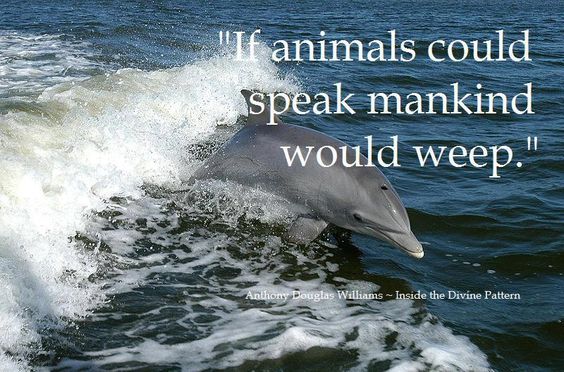
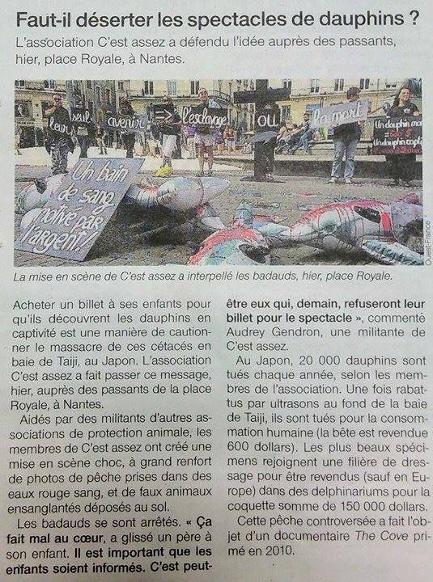
France, 18th of August 2017
Our serama chicken Ukkie is celebrating her 8 1/2th birthday today. She was born the 18th of February 2009.
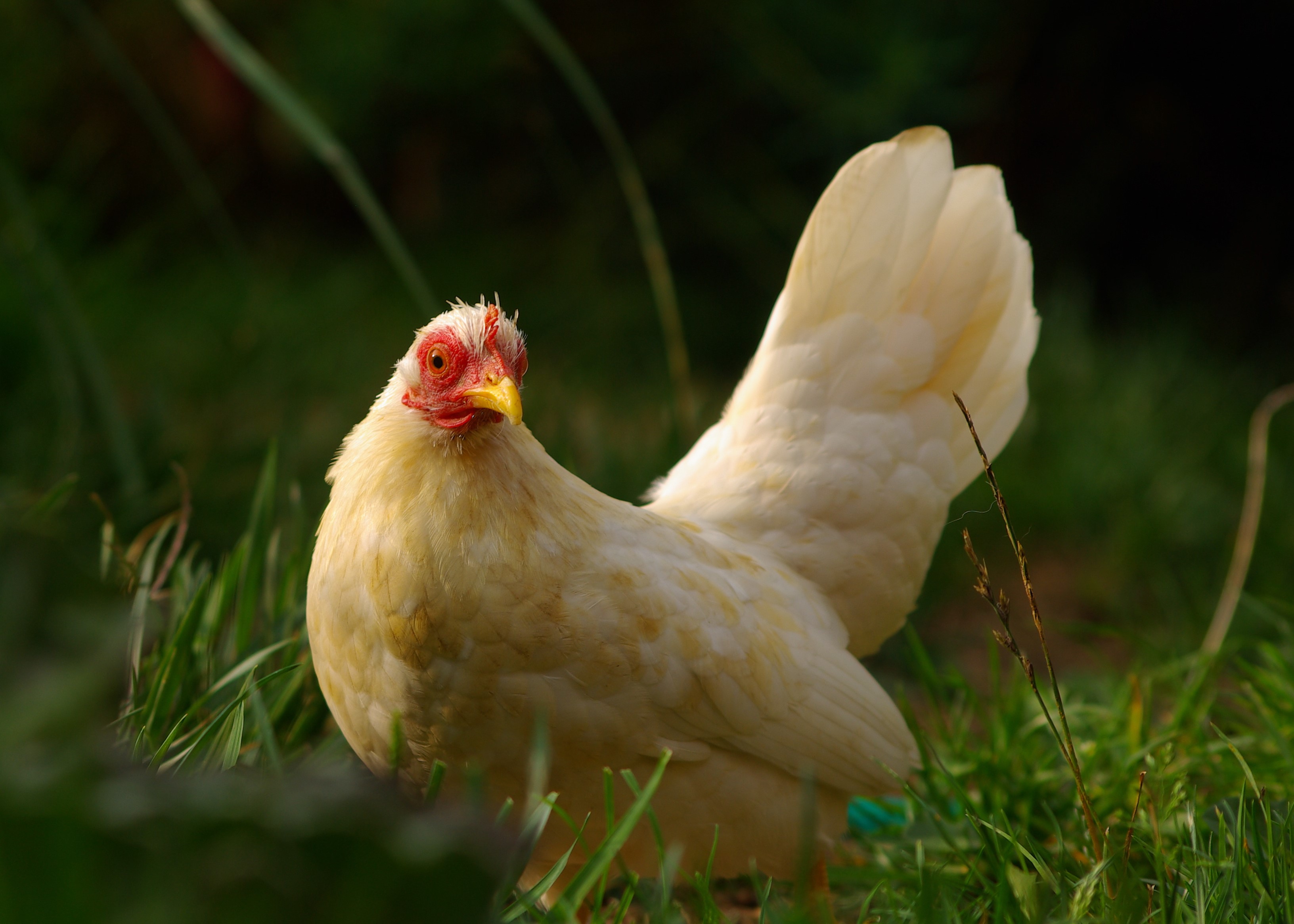
France, 18th of August 2017
1,5 million chickens gassed for Fipronil
....we dedicate this video....Sleepsong. https://www.facebook.com/nala.bournezeau/videos/1423256791088810/
France, 17th of August 2017
Black Cats Day
France, 5th of August 2017
The Fipronil scandal
Just like cats and dogs have parasites such as fleas and ticks, so chickens have their own parasites. One particularly nasty one is the red mite. It hides in tiny cracks and crevices in the chicken house during the day and comes out at night to suck the blood from chickens.
Even relatively low levels of infestation can keep the chickens awake at night as they scratch the inching bites of the mites. Higher levels of infestation can result in irritability, stress, insomnia, baldness, cannibalism, wounds becoming infected, and even death.
Prevention is obviously better than cure, but it appears to be very difficult to eradicate an infestation of red mite from chicken house. According to research by a Dutch university over 80% of chicken farms are infested with 27% having extreme infestations. This is, of course, a major animal welfare problem and also an economic problem for the farmer who may see a fall in egg production.
So when a company started to market a product that proved to be very effective against red mite it became very popular. It appears that nearly two hundred farms used this wonder product. Unfortunately, it had one big disadvantage: it uses an insecticide, Fipronil which is not authorised for use on laying hens. This is because it is excreted by the hens in their eggs and it is moderately toxic to humans.
Once this was discovered there was a big scandal in the Netherlands which led to many millions of eggs being destroyed. As the product is no longer being used, in time, the hens will eliminate it from their bodies and it will no longer be present in their eggs. However during this period the farmer still has to feed them and take care of them. This appears to be unacceptable to many farmers who have been given permission to cull their healthy, but temporarily unprofitable, hens. Hundreds of thousands have already been gassed to death with carbon dioxide. Many more hundreds of thousands are likely to follow. So much for animal welfare.
However, perhaps the most shameful aspect of this whole affair is that in the EU there appears to be no effective treatment for red mite. How is possible that in these so-called civilised countries over 300 million laying hens are being exposed to red mites without any effective treatment?
We prepared an open letter to the Dutch press and any other interested parties about the scandal which you can read here (in english)
France, 30th of July 2017
The start of our "Vegan Tour de France"
Although having lived in France now for many years we haver never really had the opportunity to enjoy visiting the country. When we came here our first priority was the house, then the garden and the fields. Then we got involved in the association for the protection of animals NALA that has taken most of our time until recently. We thought it was about time to travel a bit so we bought a little caravan, an old Eriba Puck, with an awning.
Yesterday was our very first trial trip to La Rochelle which is only about an hour away from us. With the car laden with our lugage in the back, our tiny pet chickens in their tent and our green-cheeked conure parrot, Pindy, on the backseat we left. Of course, we expected a little bit of traffic as it is peak holiday season at the moment. What we didn't expect though was a blockage of the main tourist road by farmers protesting for the umpteenth time that they aren't being kept by the taxpayer in the manner to which they are accustomed.
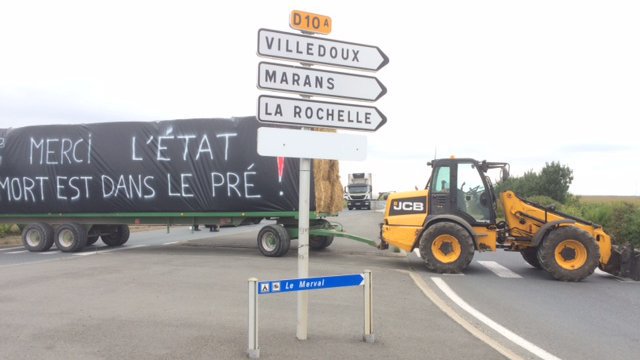
The article about the protest, published the day we left:
We had planned to camp in a camping site in La Rochelle, but traffic was impossible. Luckily when it came to a dead halt we are only two cars away from a side road that had a sign post announcing a campsite "Le Merval" . So we decided to stop there.
It was the receptionist who informed us about the farmers' protest and told us that they didn't know how long it would go on for. So we just took it easy and set up camp and then had a bite to eat, while we waited for the immense traffic jam to disperse.
By late afternoon twice was flowing freely so we took the car into la Rochelle. There, after the customary visit to an Irish pub, we had a lovely, vegan meal in a small eco-friendly restaurant called 'Le comptoir de Walter' which also serves vegan and vegetarian food. You will find the following advertures of our "Vegan Tour de France" here and here on facebook
France, 15 July 2017
And a tribute to our cat Mau who passed away this evening.
France, 15 July 2017
The magical beauty of nature
The Hummingbird moth ( Macroglossum stellatarum) in an Albizia tree in our garden
France, 7 July 2017 Tribute to goosy!
In memory of our goose who died 2 days ago, I publish this little video we made a couple of years ago .....He was 12 years old, and probably suffered from the extreme heat we are enduring in France lately. RIP
France, 20 June 2017
A herron chased by a coypu.....
France, 17 June 2017 And more deer
France, 17 June 2017 More boar
France, 16 June 2017 Wishing you a very good weekend :-)
France, 12 June 2017
Another visitor appears on our land.
France, 22 Mai 2017 Spring in all its glory continues
Bambie now 10 days old
France, 22 Mai 2017 Spring in all its glory
Enjoy! (NB these deer are being filmed with a hidden camera. The animals are not disturbed.)
France, 22 April 2017 World Day of Animals in Laboratories
Today we participated to a Happening for the World Day of Animals in Laboratories in Nantes (West of France). France has a record of animals used for research in the EU. Not many people are aware of this. Some wonderful people walked by, who signed the petitions, asked questions, and wished us luck in this fight for the rights of animals in laboratories, and of course the end of the use of animals for research. There is more and more evidence that animal testing is not necessary at all.
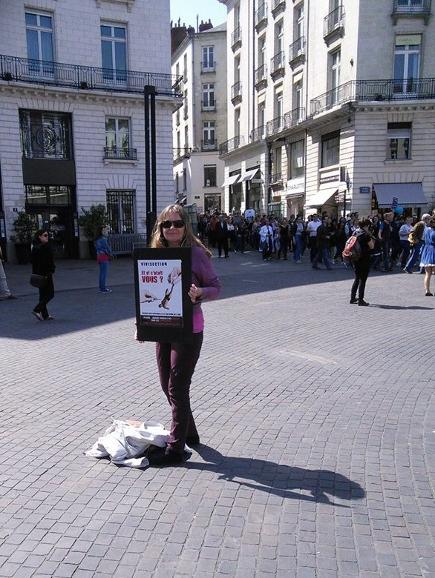
France, 15 April 2017
Deer playing in the hay in the field
This is what we do it all for: to give animals a home. Enjoy this little video of deer playing in the field with a little hay stag I have been trying to make just a couple of days before for our rabbit. ;-)
France, 3rd of April 2017
The veggies are winning
You may occasionally see some figures showing the percentage of the population that is vegetarian or vegan and think that it’s not a very big proportion. It might not be a big percentage, but it’s very significant, because it’s growing and that means that the meat industry is in dire straits.
Forget about those heart-warming stories of the little farmer who loves his livestock to (their) death. The meat industry is mainly large corporations run by steely eyed technicians who are only focussed on making as much money as possible. And that’s why the relatively small number vegetarians and vegans have got them running scared.
Whenever people talk about the meat industry, they invariably describe it in terms of its turnover and say that it’s a multi billion pound/dollar/Euro industry. It can sound impressive, but from a business perspective, profit and return on investment are much more important.
Allow me to explain with a quick and dirty explanation of how business works. Let’s use a simple example: someone buys widgets from a wholesaler and sells them retail to individuals via the internet. In order to make a profit, they have to sell at a price that is higher than their cost price.
The cost price has two elements: variable costs and fixed costs. Variable cost is the actual amount they pay for the widgets. Fixed costs are the expenses of running a business that are incurred whether they sell anything or not: e.g. business premises, utilities, equipment, wages, insurance, business taxes etc.
Let’s suppose that the fixed costs are £40 per year and the widgets cost £40 for a hundred. That’s the variable cost. So the total cost for buying 100 widgets is £80 (the fixed cost plus the variable cost). Suppose that they are all sold for £1 each. The amount of money received, the turnover, is £100 and the profit is £20 (turnover minus cost). Great happiness ensues.
So the next year they buy one hundred again. However, what happens if instead of selling all one hundred widgets, they only sell ninety nine? The cost (£80) is the same, but the turnover is now only £99. So the profit is reduced to £19. Less happiness ensues.
The fall in turnover was only 1% (£1 out of £100) but the fall in profit was 5% (£1 out of £20). Five percent may not seem very much, but think how it would feel to you if your income was reduced by five percent?
And what about the next year if you sold even less? That is the problem facing the meat industry: sales are declining and not only are profits falling but the return on investment is as well. The return on investment is a measure of how efficiently money is being used: if you invest £100 and have a return of £20, all things being equal, it’s a better return on investment than if you invest £100 for a return of £10.
In the example above when one hundred widgets were sold the return on investment was 25%: a profit of £20 for an outlay of £80. When only 99 were sold the return on investment dropped to 23.75%: a profit of £19 for an outlay of £100. Eventually if sales were to continue to fall the return on investment would become so small that the smart money looks elsewhere.
Businesses can shrug off a fall in turnover, profit and/or return on investment if it happens infrequently, but if it becomes a regular event then the industry is doomed. At first they can compensate by making savings in their costs: bigger farms with fewer staff, more efficient fodder and feeding practices, breeding for faster growth etc. For example a few years ago most pig farms only had a few dozen animals, then farms of a few hundred started to appear. This made the smaller farms less profitable and they started to disappear. Now farms with a thousand or so animals are being built and the farms with “only” a few hundred animals will disappear.
This development is a double blow to the industry: the smaller farms need more staff than the bigger ones for a certain number of animals. So jobs are lost when they are replaced by bigger, more “efficient” ones. This means that from a political point of view, there is less incentive to protect the sector. In addition, when the farms with a few hundred animals were built, they were expected to be in operation for twenty years or more to provide a good return on the money invested in building them. If they are forced out of business earlier by bigger farms, then the moneymen aren’t going to be happy and they will either stop financing completely or they will ask for higher interest to compensate for the increased risk.
Cutting costs can only provide a temporary respite if demand keeps falling. It’s possible to stimulate demand by spending more on advertising, but that also starts to show diminishing returns.Looking for new markets is also a potential solution: many european producers are hoping that Asian countries will buy their products. However, China which is one of the biggest new markets is aware of the health issues associated with eating meat and in June 2016 sent out a health warning to its citizens encouraging them to eat less meat.
The reality is that the livestock industry is facing death by a thousand tiny cuts and it’s the vegans and the vegetarians aided by organisations for the protection of animals that are doing it. Every time someone gives up animal products even for just one meal it’s a tiny chip taken out of the turnover of the industry. And as we’ve seen above a small chip out of turnover is a bigger chip taken from profits and return on investment. The animal products sector won’t disappear because people stop eating their products: it will disappear when there is not enough money to be made to make it a worthwhile investment.
So our “job” as vegans and vegetarians is not necessarily to persuade people to become vegan or vegetarian: getting people to eat an alternative to animal products part of the time will be enough. For example Meatless Monday may seem like a gimmick, trivial and unproductive, but in fact if everyone did it, it would bring the meat industry to its knees. One day in a week means a fall in turnover of 14%. In the example above, that would mean selling only 86 widgets instead of 100: the profit would drop from £20 to £6. That’s a devastating fall in income. And the return on investment would fall from 25% to 7.5 % which would cause the investors to look elsewhere.
It's not only falling sales that are dooming the meat industry, but also more stringent animal welfare requirements. This is why the distinction between abolutionists who want to see the end of the meat industry and welfarists who want to improve conditions for animals in the meat industry is essentially meaningless. Improving conditions for the animals undoubtably increases the cost of meat production. This will naturally reduce profits, which reduces the attractiveness of the meat industry as a destination for investment.
So don’t lose heart when someone says that only a small proportion of people are vegan or vegetarian: we’re having a big impact on the money and every meatless meal and every more stringent regulation is another small nail in the coffin of the meat industry.
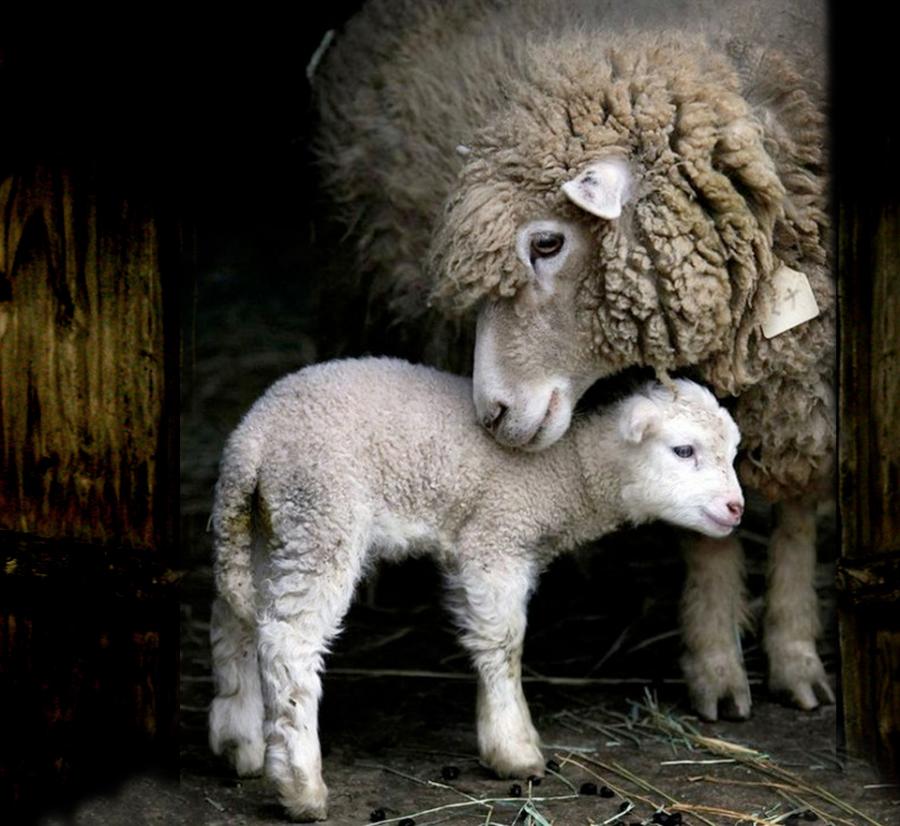
Photo from PEACEFUL PRAIRIE SANCTUARY
France, 12 February 2017
Happening for the end of slaughterhouses
Yesterday we took part in a happening for the end of slaughterhouses in the city of Nantes (Pays de la Loire).
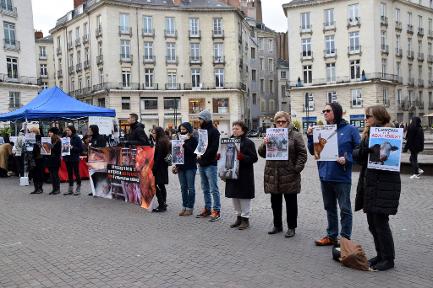
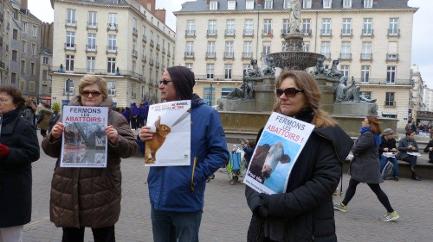
France, 10 February 2017
Letter to the EU about the avian flu outbreak
France, 10 February 2017
Proposition for reform/modification of the CAP
The 2nd of February the European Commission launched a public consultation on the future of the Common Agricultural Policy. For three months it gives anyone interested, citizens, organisations, associations and any other interested parties the chance to have their say on the future of the Common Agricultural Policy. The input will be used for a draft Commission communication about its' potential policy options for the future. We have prepared a document which we will send to them with our thoughts about the future of farming, animal farming in particular. We invite everyone to do the same. You can read our contribution if you click on the button below. If you agree with our analysis feel free to use any information you find useful from our contribution.
France, 8 February 2017
Be a five, keep 'em alive! If you're a four you can do more!
As our societies have developed we move through five stages of nutrition.*
Stage one is the one that is often called the hunter gatherer stage and which is characterised by collecting food: it leads to a diet high in carbohydrates and low in fats.
Next comes stage two: early agriculture where famine is common, then stage three receding famine as incomes grow. As incomes rise society transitions to stage four which is characterised by an abundance of (unhealthy) food such as oils, fats,
sugars and animal products and their associated non-communicative degenerative diseases: diabetes, obesity, high blood pressure, strokes, cancer, cardiovascular diseases etc. This is the development stage of most western societies with many asian countries aspiring to reach it.
Stage five is the transition to a healthy, balanced diet which is based on more fruits, vegetables and grains and little or no meat.
The transition to stage five is a behavioural change and it is not supported by society in general which mainly consists of consumers of animal products. Eating animal products is considered the norm and this perception is reinforced in media such as films, literature, magazines, where almost every meal is shown as including animal products. In addition, animal products are big business and a lot of money is spent on advertising to keep people consuming. Thanks to all these positive messages many people are not even aware of the health risks of eating meat and believe that it's vegans and vegetarians who are putting their own health in danger with their strange diet.
One problem with the vegan/vegetarian movement is extremists who look down on people who haven't progressed as far as they have. I don't think that that is fair: some people have more difficulty than others than changing their eating habits, just like some find it more difficult than others to give up smoking. If you live in an environment that is supportive of veganism, it's much easier to become one than if, for example, you work in the meat industry. Every time people don't eat meat, fish, eggs or dairy at a meal, they are contributing to saving animals lives, reducing environmental damage and helping their own health, but these are benefits that are not immediately obvious. In my opinion, those who have made the transition to giving up animal products or who are on the way to doing so deserve some kind of immediate reward for any progress that they make.
Let's say vegans who have transitioned to stage five, consuming no animal products are at level 5. People who have no vegan or vegetarian tendencies are at level 4. They probably eat three meals a day seven days a week, most, if not all of them involving some sort of meat, fish, dairy or egg product. That gives them twenty one opportunities a week to progress towards becoming a "five" by eliminating animal products from a meal. If they eat two vegan meals a week they've progressed about one tenth of the way to becoming a five, so they are now at level 4.1. That's already, on average, saving the lives of about twenty animals per year. Eat vegan four times a week and become a 4.2 and save forty animals per year, etc. The reward is not only immediate, but also provides an incentive to progress.
In my opinion, it saves more lives, animal and human, if lots of people cut down on animal products rather than one person becoming totally vegan. So why not explain to your friends and acquaintances about the nutrition levels and ask them what level they are. Then encourage them to not eat animal products during an extra two meals per week to progress towards becoming a five, keeping 'em alive.
* More info on the five stages can be found here:

France, 30 January 2017
Stop the massacre of poultry
Please sign and share the petition launched by 6 associations to end the useless massacre of healthy birds.
Once again avian influenza has hit poultry farms not only in France but all over the world.
Once again millions of healthy poultry are slaughtered or gassed in gas chambers, as a preventative measure to prevent the spread of the disease.
And once again, the farmers are asking for subsidies from taxpayers to solve their problems.
We find this scandalous.
This futile and scandalous massacre can never eliminate the avian flu virus. Moreover, the high concentrations of poultry on farms create a perfect environment for encouraging a lethal mutation to a form that is transferable from animal to human (which has already happened and what has already caused about 100 deaths) and from person to person.
In fact, researchers have already succeeded in making the virus transmissible from person to person under laboratory conditions and they are convinced that the mutation they have obtained may very well appear spontaneously in nature. According to the former Director General of the World Health Organization, Dr Lee Jong Wook, "It is only a matter of time before an avian flu virus - most likely H5N1 - acquires the ability to be transmitted from human to human, sparking the outbreak of human pandemic influenza. We don't know when this will happen. But we do know that it will happen."
It is time to tackle the problem at the source by questioning the methods of raising poultry. They are bad for human health, bad for the future of the planet and bad for animal welfare that is enshrined in the law.
Governments listen to the complaints of the poultry farmers while allowing the animals, who have no words and no vote, to suffer silently.
So we are their voice !!
We refuse to support, with our taxes, an industry that is unable to find humane and effective solutions, an industry that persists in its mistakes, without respect for animal welfare or long-term human
health.
We demand that governments - national, European and international - take their responsibilities and stop perpetuating this dangerously failing system.
Thank you!
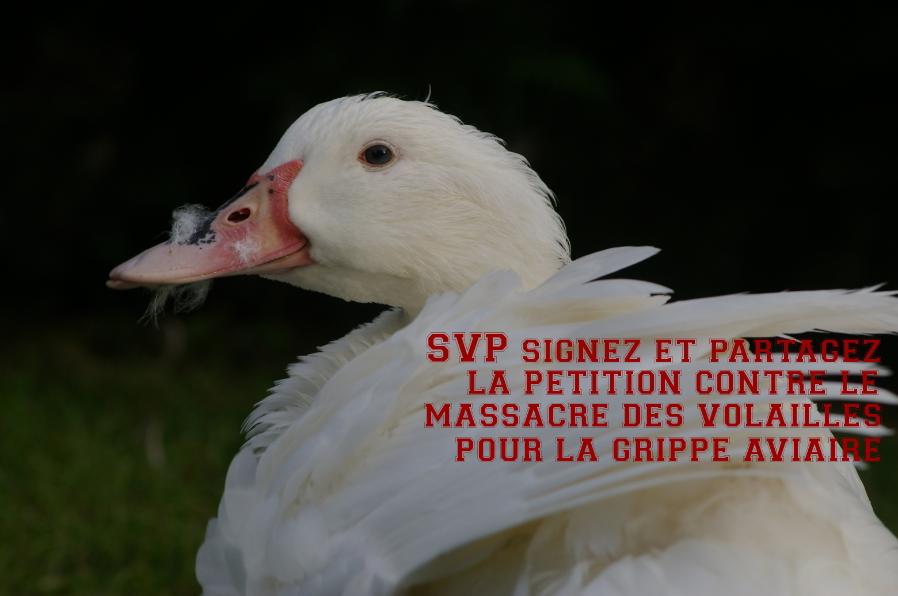
France, 28 January 2017
Populism
Today we live in a complex world where there are many complicated relationships and everything seems to be interconnected. We also get incessantly bombarded with so much information that we can't really make sense of it all. This means that we have to some extent rely on others to help us understand it. Unfortunately, one design fault with the human
mind is that it likes to find patterns and simple connections between things. This means that it is surprisingly easy for other people to exploit us. Unfortunately another trait is to become emotionally invested in an idea or a position and refuse to accept facts that undermine that position or proof that it is wrong.
I was recently watching a talk show on Dutch TV and one of the panel explained how populists like Wilders (and Trump, Farage etc) get traction...
First they find something to complain about. We measure so many things that you can always find something: unemployment, growth, exchange rate, etc. Then claim that it's been stolen from us or destroyed or some other emotive term. Finally blame it on someone. One recent example is jobs.
1) Many people who are looking for work can't find jobs.
2) Our jobs are being stolen and destroyed.
3) Who's stealing/destroying our jobs?
The popularist answers, “Immigrants and foreign countries.” And then continues,“Vote for me and I'll stop them.”
We've all seen recently just how successful that has been with approximately half the voters falling for this approach. It's
unfortunate, because in the real world, there are many causes of unemployment: workers not having the right skills, advances in automation, out sourcing, sectors becoming redundant, lack of competitiveness, lack of investment, lack of demand, uncertainty and worries about the future...
Therefore, it should be pretty clear that blaming immigrants and other countries is most likely not going to solve the unemployment issues.
Other measures are going to have to be taken if the popularist doesn't want to lose support. One is to actually treat the causes, but quietly and without drawing any attention to the steps being taken. However, this requires some expertise and the means to implement those steps. Another much easier way is to find someone else to blame. Continuing with the theme of unemployment, in some countries it's now the unemployed themselves who are seen as the problem...
This is not the way to tackle difficult problems. We should try to remember that if someone tells you that there is a simple solution to a complex problem then it probably means either that they are a fool or that they think that you are a fool.
Nigel
France, 25 January 2017
Health care and meat consumption: a letter for the candidates of the elections in the Netherlands. (You can copy and paste it if you want to sensibilise your politicians)
Dear Sir/Madam,
I recently learnt that there are problems in the health sector in the Netherlands and that more money may be necessary to be able to provide a sufficiently high standard of treatment. Sums as high as €2 billion have mentioned. Although this sounds like a huge amount, it works out as only about 30 cents per person per day. Even so, a more cost effective approach is prevention, rather than cure.
Are you aware that when people consume less animal products they are, in general, healthier? This has been shown in many peer reviewed studies analysing the health of many tens of thousands, if not hundreds of thousands, of people. A small selection of them are:
- "The results of our analysis support a moderate positive association between processed meat consumption and mortality, in particular due to cardiovascular diseases, but also to cancer." "Meat consumption and mortality--results from the European Prospective Investigation into Cancer and Nutrition" by Rohrmann, Overvad et al https://www.ncbi.nlm.nih.gov/pubmed/23497300
- "Our results suggest that vegetarians have a significantly lower ischemic heart disease mortality (29%) and overall cancer incidence (18%) than nonvegetarians." Cardiovascular disease mortality and cancer incidence in vegetarians: a meta-analysis and systematic review by Huang T, Yang B et al https://www.ncbi.nlm.nih.gov/pubmed/22677895
- "Red and processed meat intakes were associated with modest increases in total mortality, cancer mortality, and cardiovascular disease mortality." "Meat intake and mortality: a prospective study of over half a million people" by
Sinha R, Cross AJ et al https://www.ncbi.nlm.nih.gov/pubmed/19307518
- "In a dose-response meta-analysis, consumption of processed meat and total red meat, but not unprocessed red meat, was statistically significantly positively associated with all-cause mortality in a nonlinear fashion. These results indicate that high consumption of red meat, especially processed meat, may increase all-cause mortality." "Red meat and processed meat consumption and all-cause mortality: a meta-analysis" by Larsson SC, Orsini N. https://www.ncbi.nlm.nih.gov/pubmed/24148709
- "These results support the evidence that fruit and vegetable consumption is associated with a lower risk of death." "Fruit and vegetable consumption and mortality: European prospective investigation into cancer and nutrition" by Leenders M, Sluijs I et al https://www.ncbi.nlm.nih.gov/pubmed/25154553
Reducing the consumption of animal products would also help the environment by reducing the negative effects caused by the meat, dairy and egg industries: greenhouse gases, excessive water consumption, pollution of waterways, changes in the use of land contribution to climate change, antibiotic resistance etc. This could be achieved simply by reducing the subsidies to those industries. However, those industries that stand to lose out, will vigorously resist any attempts to change eating habits. Therefore any attempt to do so should not only have cross party support, but should also consider how to help those industries cope with the change.
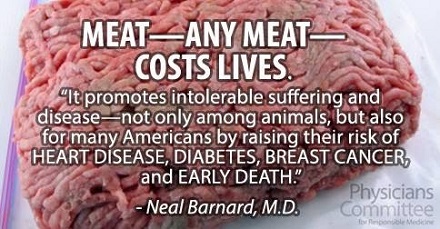
France, 22 January 2017
No Future
The other day I bumped into a young lady that I vaguely knew and stopped to chat. She told me that she had just finished her studies and was looking for work. So of course I asked her what she had studied. "Agriculture" was her reply. And then she added, "And I really want to work in the livestock sector." "Why livestock?" I enquired. "Because I love meat," she told me.
That made it difficult to carry on a meaningful conversation, but not perhaps for the reason that you imagine. It wasn't so much that we were obviously not kindred spirits. To my surprise, and I know that it will seem patronising at first sight, my reaction was to feel pity for her.
However, it wasn't anything to do with her eating habits even though eating meat is most likely to affect her health negatively and shorten her life. No, it was the fact that during all her years of education no-one had informed her of the harm caused by the meat industry. In addition, she had been lead to believe that she could make a life long career in that industry. It's all the more surprising as it's no secret that the number of people employed in agriculture in France has been falling for decades from about 3.85 million in 1970 to about 965.000 in 2010. https://www.insee.fr/fr/statistiques/fichier/1374189/ASF_102DD1.xls
That's on average about 200 jobs lost per day every day for forty years.
The reason is, basically, improvements in productivity thanks to more mechanisation and economies of scale. In other words bigger and bigger farms and more and more machinery. The ironic thing is that in their applications for planning permission these mega farms claim to create jobs. However it is quite clear that a farm that employs four people to look after 1,000 animals provides less employment than ten farms each with two employees and 100 animals. These mega farms can produce meat more cheaply, but that is often paid for by a reduction in animal welfare.
However, these farms are trying to buck a trend: meat consumption in France is falling. Therefore, they are targeting the export market. This is likely to lead to the European taxpayer subsidising an increase in meat consumption, with all its negative health consequences, in other countries while retaining the pollution in Europe.
One country of interest is China which has a middle class that is becoming increasingly affluent and able to afford to eat more meat. However, China has a shortage of arable land. The thinking is that it can't afford the inefficiency of growing crops to feed to animals for people to eat. Hence, it's seen as a good, long-term customer for buying meat. What is often ignored is that China, along with many other countries, is acquiring arable land in other countries.
So although the French meat industry is investing in new farms that are supposed to have a payback period of a couple of decades, it is quite possible that their target market will disappear in the near future.
In addition, more and more people are becoming aware of the contribution that livestock makes to climate change. Is it possible that the industry will escape measures to reduce its effects? I think that that is highly unlikely. So although when I left that young lady I wished her good luck, I didn't rate her chances very high.
France, 8 of January 2017
The cost of eating meat
We all know that eating animal products is bad for the animals, bad for the environment and bad for your health. But are you aware that it's also bad for your bank balance?
As soon as anyone learns that you're a vegan or a vegetarian, it doesn't take long before you discover that many are an expert nutritionist too. The subject that seems to be the greatest preoccupation is "Proteins". There seems to be some widespread notion that plants just don't provide proteins. It's quite ridiculous really because the average human being gets about 49 grams of protein per day from plants: that's 96% of an average adult's requirement of 51/grams per day. (See page 62 of http://www.fao.org/3/a-i5716t.pdf)
One reason that so many people get a large proportion of their daily requirement from plants is because it is not only a cheap source of protein, but it also supplies other nutrients too, which makes eating a balanced diet easier.
Difficulties associated with a vegan diet are that you have to mix your sources of proteins to make sure that you get all the essential amino acids. You also have to take care to include a source of vitamin B12 which could mean taking a supplement or eating/drinking products fortified with B12. Getting an adequate supply of calcium and omega-3 fatty acids is also something to be aware of.
For someone who eats animal products, the biggest issues are likely to be an excess of saturated fats and calories. These can lead to health issues such as diabetes, cancer, cardiovascular disease, strokes and obesity. This seems to be reflected in the medical research which suggests that vegetarians and vegans have fewer health problems than people who eat animal products.
But let's get back to the cost... We don't just need proteins as our gross nutrional requirement, we also need fats and carbohydrates, as well as fibre. However, we also have to be sure that we don't eat too much salt or saturated fats. I had a look on the website of a supermarket in the UK to try to find the cheapest vegan and animal based sources of protein. I then calculated how much it would cost to get a day's protein requirement.
The cheapest that I found was the supermarket's "value" brand of spaghetti: 20p for 500g. This has a protein content of 12 grams per hundred grams so 425 grams supply the 52 grams required: you also get very little saturated fats and salt but also hardly any fibre. However it only costs 17p to supply your daily dose of proteins. http://www.tesco.com/groceries/product/details/?id=258289625
Oats were also quite cheap: 1 kg of own brand value oats cost 75p http://www.tesco.com/groceries/product/details/?id=259458142 It contains 11 grams of protein per hundred grams so you would require about 450 grams to fulfil your daily requirement: that's going to cost about 34 pence. It does come with a lot of fibre and very little salt and saturated fat.
The cheapest meat based product that I could find was the supermarket's "value" brand pork sausages £1.09 for a kilo. http://www.tesco.com/groceries/product/details/?id=280555822 With a protein content of 14.2 grams per hundred grams, a day's protein requirement would require about 360 grams costing about 39 pence. However this is also accompanied by about 5 grams of salt and over 10 grams of saturated fat and only a small amount of fibre.
If you compare the plant products to the cheapest meat product, it's clear that not only do they provide a cheaper source of protein, but they also provide more calories. This means that it would be possible to fulfil a person's total dietary requirements a lot cheaper using these as a base than using meat. I'm not advocating that you live on pasta or oats as a vegan diet doesn't have to be and shouldn't be boring. However, if someone complains that a vegan diet is a fad for rich people, you can show them just how wrong they are.

France, 6 January 2017
Aura has reached the age of 10 years and 8 months today. Reason to put him in front of the camera and make this little video. Enjoy! You'll find his story here
France, 3rd of January 2017
Like cat and dog : a very special story in 2016
Anti speciesism in all its' glory. A foster family tells us their story.
"Who says cats and dogs cannot get along together? Here is proof to the contrary. Lily, a small spaniel cross, was thrown out of a car in the Vendée region. She was about 6 months old and on heat. She was nearly run over on the busy departmental road, but was rescued by a lady who unfortunately did not manage to get the car registration number. Lily was placed with someone who has a house full of cats and who already owned an 11 year old dog, goats, sheep… Lily blossomed. She loves cats, delights in having so much company and quite obviously speaks several languages: French, cat, dog, goat etc….
One month later, Lily’s new mistress was asked to take in a 6 day old kitten, found all alone in the middle of a field. Little Charisma did not like the special formula milk. She would pull a face, push the bottle away and try to suckle from the dog, who showed willing. The miracle happened – mother’s milk began to flow in abundance, even though Lily was not pregnant! She made a nest for her baby, in the bottom of the wardrobe, and fed her for at least a month and a half. The two remain very close and Charisma is also pampered by all the other cats. As a result, Charisma, now 4 months old, is very advanced for her age, physically and intellectually, and is the pride and joy of her two « mummies », canine and human! And, of course, she speaks several languages !"


France, 1st of January 2017
The elephant in the room...
I'm reading an interesting book "Saving Ourselves: Interviews with World Leaders on the Sustainable Transition" by Yacine Belhaj-Bouabdallah. As you've probably guessed from the title it contains comments from various world leaders and experts on a number of subjects dealing with the environment.
One such issue is agriculture and feeding the world. It was generally acknowledged that there is enough food available to feed everybody and that waste and distribution problems contribute to people in some areas of the world being malnourished. There was also some concern about population growth. However, in general, most comments, in my view, were optimistic about the trajectory of population growth and that birth rates are becoming manageable. It was interesting to discover that there is real concern about the fertility rate being too low in some countries: this, coupled with people living longer, can lead to a situation where there are not enough workers to support the retired people.
There was some discussion about the improvements in the productivity of agriculture in the more developed countries and how the methods could be applied in less developed areas of the world which rely mainly on smallholder farmers. These farmers do not yet benefit much from the technological advances used to increase productivity in developed countries. Such advances rely a lot on intensive use of resources such as fertilizer, water, pesticides and herbicides as well as fossil fuels to run their machinery. As most of us are aware, this brings its own set of problems, such as chemical residues in water, fertiliser run-off into rivers and seas, herbicide resistant weeds etc.
Steps are being taken in developed countries to solve these problems through better and more precise use of resources by selectively choosing the crops and the inputs that best suit the area. With some support, these techniques could be applied to developing countries to enable them to leapfrog the wasteful and high polluting, intensive use stage of improving agricultural production.
Another issue in developing countries is that a lot of the losses occur post harvest. It appears that better distribution chains and storage facilities could lead to a reduction in crops being wasted through spoilage, rot and infestation. A lack of financing is also a problem for farmers, especially in areas where women can not get loans. In some areas, most of the farmers are tenants and the land is owned by a small number of individuals: these people can slow down or block measures that could improve overall productivity that benefit their country because it is not in their own personal best interest.
So overall there was some optimism that we can feed the world for the foreseeable future even though it might require increasing the amount of land under cultivation in Africa by 50%. Unfortunately there was no real acknowledgement of one of the biggest wastes of agricultural resources and one of the biggest contributors to climate change: live stock farming.
I was really quite surprised by this as the environmental consequences are very well known: GHG emissions, excessive water use, degradation of soils and water sources, antibiotic resistance,etc. The harmful effects on people are also well-known: richer countries paying poorer countries to produce feedstuff for animals rather than producing food that their own people can eat directly and the well known negative effects on health: cardiovascular diseases, strokes, diabetes, cancer etc that accompany every animal product based dish. And the waste and immorality of feeding on average 3 calories to an animal to produce one calorie of meat when people are going hungry.
The really odd thing is that for the consumer a vegetarian or vegan diet is much cheaper than a diet base on animal products. There is a lot of money invested in the live stock industry and a lot is spent on advertising to encourage people to eat animal products. Is that a reason why vegan/vegetarian diets are not talked about and promoted? Is this another example of vested interests and money influencing policy?
Whatever the reason, the consequences of eating meat, fish, eggs and dairy products should be given a more prominent position in the discussion on sustainable development. You can help by spreading the word and explaining why people should go vegan.
Nigel
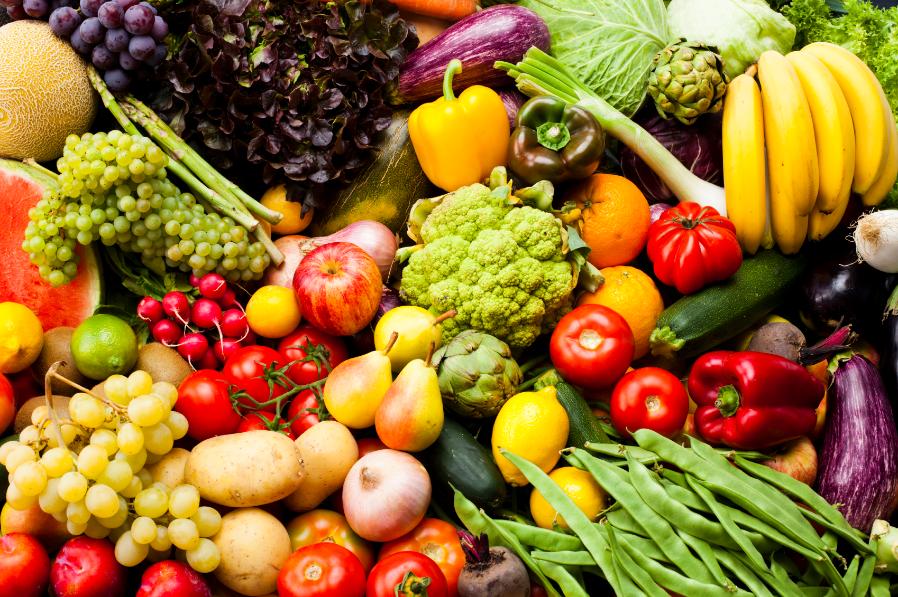
France, 31 december 2016
A Very Happy New Year to you all !
These photos were taken on our land the very last day of december 2016. It was a lovely, but cold, day today. Snow is expected, which is quite rare in the west of France. Nature is beautiful! Let's cherish it.
France, 27 December 2016
We are not from another planet, we are from the future
The Christmas festivities are over. Our meals evidently were vegan. I hope your's too. ;-) Thinking a lot about the animals that have been sacrificed these last couple of weeks as eating meat is still the norm, I would like to share with you the reason why and how I became a vegan...
There are people that can't understand this and can't accept that we won't have any more animal products in our house. So let me explain.
When I was little, we lived in Belgium, in a little town close to Brussels, in a somewhat cosmopolitan environment, you might even say that it was an artificial environment. There we were very happy indeed. And every summer on our holidays we went to the north of the Netherlands, Friesland, where my family originates from. We, especially us kids, loved it there. There was an enormous contrast between the big city and the countryside. My grandfather and his wife, who we liked a lot, had a dairy farm with Friesian cows, ancestors of the black and white Prim ' Holstein that you can see around almost everywhere.
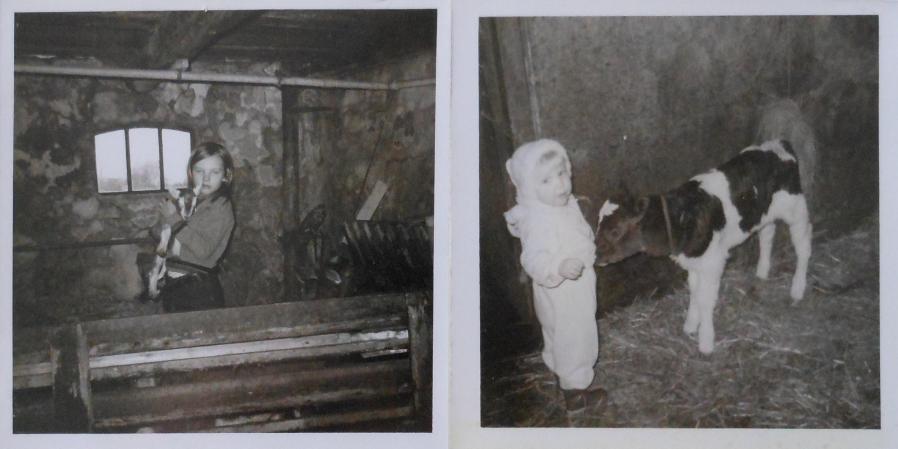
In the first photo you can see me with a goat in my arms and in the next photo my little brother in front of a newly born calf . The birth of a calf was a great moment, an unforgettable experience, but on the other hand could also end up in a total nightmare. Because if it was a small male calf, the merchant came to take it away. I still remember it very well. And I was very, very angry with my parents, my grandfather and especially with the merchant. But " that's how it is", no explanation given. At that time (the 60s) this was totally normal. No questions asked. It's only an animal.
So what do you do? You're only little, you have to accept, you forget, and there were so many other animals to cuddle on that farm. You live your life. And for a long time you fit in and do as the others do. Please note that my big brother became a vegetarian when he was 15. We didn't really understand why and we even made jokes about him .... Yes, because that's what society makes you do, how it brainwashes you, if you don't follow the norms.
As for my husband and I, we became vegetarian a lot later, as a matter of fact only once we came to live in France. We were warmly welcomed by our neighbors, and we were invited to see their farms from the inside with chickens, turkeys, ducks, rabbits, quail, cows. Although they were all very proud of the care that they took of their animals, it was clear that they cared about the health of the animals only so far as it affected their production. It was clear from the smell of ammonia and the mess inside a chicken shed that the welfare of the animals wasn't a consideration.
The turning point however for our change in live-style, our consciousness that is, was when we rescued two little chicks from a broiler farm. So we stopped eating poultry. After that, it all went very fast. Because when you don't eat poultry, how could you continue eating pigs and cows, and why not eat dogs or cats? We became aware of the concept of Speciesism, which means that we were discriminating against all farm animals but in the meantime helping, saving, adoring our beloved pet animals. So after that pigs and finally all meat was kept off our plate and now even fish, dairy products and eggs (except for the eggs of our chickens and geese, because what a shame it would be to throw them away - please note that we have them because we like having them, they are our pets, we don't have them for their eggs).
I still wear my leather coat, which I bought now almost 20 years ago, yes, but new shoes are vegan. Veganism is not a religion, it is not a fashion. It is a live-style, an awareness that what we do to animals is wrong. I already felt this when I was little, and I feel it very strongly now. And I'm sorry if it bothers others. But as was said to me 40 years ago "that's how it is".
A couple of days ago we went to visit a friend of ours who rescued some dairy calves, two males of course, waste products from the dairy industry. But how adorable were they! Below a photo of Nigel with one of the cows.
We can live very well without hurting animals, so why won't we! On my facebook page https://www.facebook.com/nala.bournezeau I very regularly share images that might shock some people. But you should realise, it shocks me probably even more. However it is necessary to show them. I have to show them, even though it is hard. I congratulate all those associations, not only in France but all over the world, that make sure that the world sees what goes on behind those walls. As Paul McCartney said so wisely, “If slaughterhouses had glass walls, everyone would be a vegetarian.” And I would prefer to change this into vegan! Because also dairy cows, calves, goats and their babies and all laying hens end up in these same slaughterhouses. I am pretty sure in the long term everyone will come to this awareness, if they want to see it, if they can see it. Thanks for reading this very personal note ! And please think about it! Go vegan.
Marit
France, 20 December 2016
Anti-speciesism and climate change
There's a nifty little tool that enables you to see the effects of various actions on climate change. It's called the Global Calculator and it's available on-line here: http://tool.globalcalculator.org/
It's probably a good idea to open it in another tab now, so that you can see more clearly what I'm talking about...
After the introductory page you are presented with the "business as usual" (BAU) scenario: that's the one where we blithely destroy the environment by carrying on the way we are at the moment. There's an icon of a thermometer and if you hover over it with your mouse pointer it shows an estimated temperature global mean temperature change of between 1.9 and 6°C by 2100. This is most emphatically not good: we should be trying to keep the temperature change at less than 2°C.
Below the graphs and the thermometer you will see a number of boxes with yellow lines in them: the one that I would like you to take a close look at is on the bottom left and is called "DIET". When you click on the little arrow next to it, it expands to show three options that you can adjust individually. Let's take a look at the "Quantity of meat" option.
It's already on level 2.0 which, as you can see by hovering your pointer over it, means that the average person globally gets 220 kcal/day from meat. This is up from the 2011 estimate of 187 kcal/day.
Now click on the level 4.0 box, which corresponds to 14 kcal/day: the amount of meat consumed by the average Indian in 2011. The effect on global average temperature change is dramatic: it's now only 0.8 to 3.4°C compared to 1.9 to 6.0°C under the BAU scenario.
Quite simply, the lifestyle change that an individual in the developed world can make which has biggest effect towards combatting climate change is to give up eating meat.
You may be puzzled as to why this has such a large effect. The little "i" next to the "Quantity of meat" lever takes you to an explanation. Mainly, it's because eating meat is a very inefficient way of getting calories and proteins. The food that is given to animals is not all converted into meat: it's used for making their bones and their fur or feathers. They also use some of the food to keep alive and move around. At best, for every two calories fed to a chicken or a pig you get one calorie of meat. At worst, it can take fifteen or more calories fed to cattle to provide one calorie of meat.
All this extra food that has to be fed to animals comes with an environmental cost too, as more land has to be cultivated. Land use change is a big contributor to climate change: cutting down forests for pasture or cropland not only releases a lot of carbon dioxide, but also reduces the number of trees available to absorb carbon dioxide. By reducing the amount of food given to animals, we could allow the surplus pasture or cropland that is used to feed them to be used for biofuels or
for reestablishing forests, thereby reducing greenhouse gas emissions.
And all the excess food fed to animals leads to more waste products: their dung and their urine and the methane excreted by ruminants which is a very powerful greenhouse gas. In addition, you have all the energy expanded on looking after the animals, transporting them, killing them, refrigerating them, transporting bits of them to be sold etc.
Other consequences that are not taken into account in the Global Calculator are the effects on people's health of eating meat: cancers, diabetes, obesity, heart disease etc. All these have a cost to the economy as well through medical bills and lost productivity http://www.pnas.org/content/113/15/4146.full
By now the message should be clear. For your own health and the health of the environment: Go vegan!
Nigel
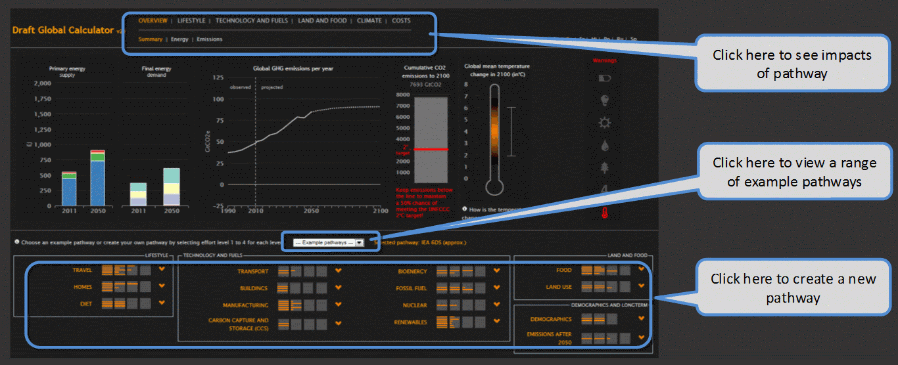
France, 13 december 2016
Veganuary
The verb "to work" followed by a direct object can have different meanings depending on how it's used. For example, you can work a piece of metal to give it a new shape or you can work a horse to get something done. You can also use it to complain about being given too much to do by saying that your boss is working you to death.
The other day, driving through the countryside and seeing the bare, ploughed fields started me wondering about the phrase "working the land." If you look at the picture below, you also might wonder whether it was worked to give it a new shape, worked to give a useful result or worked to death.
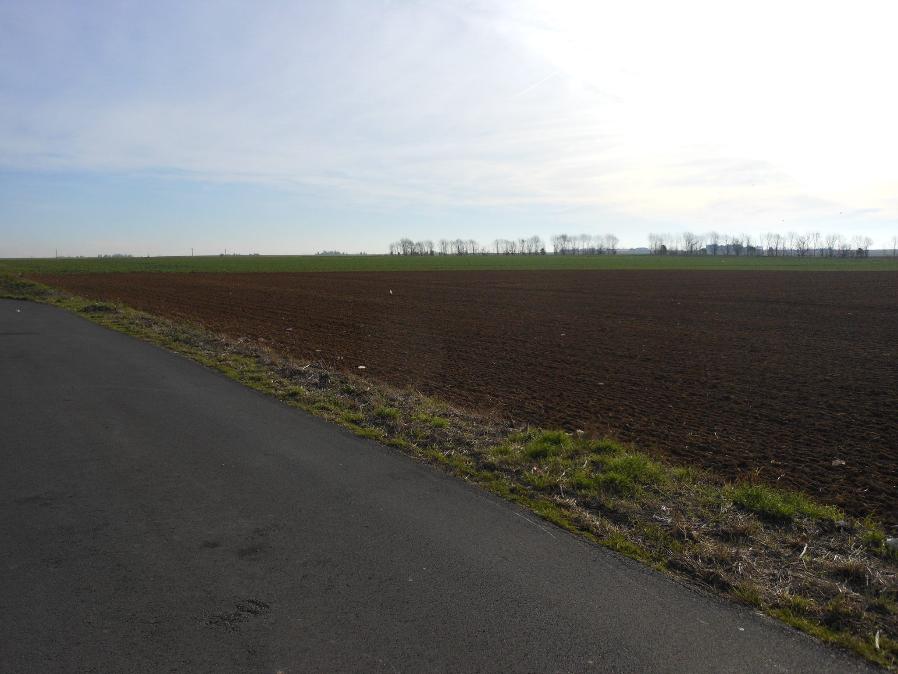
Photo of bare fields
Compare those bare fields to untouched, unworked, pasture. They look dead and sterile: what food and shelter do they provide to the wildlife? The soil lies bare to the elements: losing water faster than if it had a protective cover of plants. Drying out it becomes friable and more susceptible to erosion, allowing the fertile soil to be picked up and blown away by the wind. The habitat of the vital earthworm has been disturbed, reducing their numbers and the natural predators of crop pests will have had their numbers reduced as well.
Yes, in a few months the fields will probably bloom with new crops, but only a single variety of plant, a monoculture, that will satisfy the needs of a limited range of wildlife. And they will most probably be treated with herbicides and pesticides to ruthlessly prevent unruly Nature from interfering with the generation of a profit.
Photo of our field
It's all so unnecessary: we subsidise the farmers so that they produce as much as possible and then we waste vast amounts of food. A major source of waste is not what is left on the shops' shelves or what you leave on the side of your plate. In the developed world, a huge amount of food is wasted by giving it to animals to eat, so that we can then eat the animals. Does it really make sense to feed anything up to fifteen calories to a cow to produce one calorie of meat?
It's only possible because we don't look at the hidden costs of eating meat: I've already alluded to the loss of habitat and the ensuing loss in biodiversity. To those we have to add excessive use of water: anything between 5 to 20 tonnes is needed to produce one kilo of beef. It seems too incredible to be true, but you can save more water by refraining from eating a single hamburger, than by giving up washing for a month... and your entourage will probably appreciate it more.
There's pollution as well: greenhouse gas emissions in the air, excess nitrogen and phosphorous waste in the water and toxic residues from herbicides and pesticides in both the soil and the water.
Another hidden cost is due to the overuse of antibiotics in livestock raising: apparently 50% of the antibiotics used in the UK are given to animals: in the USA it's nearer 80%. This is worrying health experts who are concerned that this is leading to an increase in antibiotic resistant bacteria that could render many antibiotics ineffective.
An issue that is much closer to all of us is our own personal health: the mainstream scientific opinion seems to be that eating meat is not good for you. Of course, over the years, we've all heard so many various media reports of things that are good or bad for us that we tend to take such warnings with, if I dare, a pinch of salt.
But why not give it a go anyway and see what happens? January is the month of good resolutions and the Veganuary.com initiative is one of them. Why not try to give up meat for the rest of the month? It's good for the environment, it's better for your wallet and your health and it's best for the animals!
Nigel
France, 12 December 2016
Adventures of a lifetime on our property Les Salines - by Coldplay
France, 4 December 2016
A wasp's nest
The beauty of nature if you leave it be.....
France, 3 December 2016
Our vision for a common future
At the moment animal welfare is becoming a hot issue in the political world in France. A Party for the Animals has recently been created, a number of candidates for the presidential elections include animal welfare in their programs and a manifesto Animal Politique has been prepared and sent to them...
On the other hand, there are other matters that are no less important. One is the crisis in the agricultural sector which has lasted for many decades. Farmers in the livestock industry have been in difficulties for a long time and it will only get worse. Until now they have not had any particular vision for the future, been pampered by the government, and regularly given financial help to keep the farmers working and producing. Many small farmers barely scrape a living or have gone bankrupt. They can't find anyone to take over their business. Children very often want something else better than taking over the farm of their parents. Farms are being sold to the neighbouring farm. So farms are getting bigger and bigger, employing fewer and fewer staff and animal welfare is getting worse in the name of efficiency. Keeping large numbers of animals together creates not only welfare problems but problems of disease, excess manure production and water and air pollution.
In addition, the debate in our modern society today is starting to focus on ethics: can we continue to use animals to feed ourselves, for our clothes, for our entertainment, for research etc. Every day new studies are published. Scientific research proves that animals are sensitive, sentient, intelligent, that they can feel all sorts of emotions and that we should abandon the widespread idea that we can exploit these animals as machines.
Another important issue that may be neglected when discussing the environmental, ethical and economic disaster that is the raising of livestock, is climate change. The issue of climate change and the impact animal farming has on the environment is widely ignored in discussions on national, international and global level. Animal farming, thanks to its associated emissions and the change in land use is probably the second biggest polluter and cause of climate change. Although saving individual animals is useful and directly rewarding, we often ask ourselves what is the point, as our whole biosphere is in danger.
All these issues plus health issues (obesity and diseases, bacterial resistance to antibiotics), deforestation, freshwater shortages, extinction of wild animals and humane issues (famine in other parts of the world) have convinced us that large scale animal farming will disappear in the long term. This might seem shocking but there is no way around it. Governments should stop pretending to young people that they can have a life long career in raising livestock and that it's worth investing in new infrastructure.
The crisis in the livestock industry won't go away! It is a waste of money subsidising the farmers so that they can carry on with business as usual. Our governments should invest in reconversion, retraining of farmers, helping them to get other jobs elsewhere. And looking for solutions to improve animal welfare should not be a specific goal per se, but should be done parallel to the process of phasing out animal farming. It should be clear that we are talking about the far future. We are very well aware that this is a situation that will not be solved in one or two years, even in 20 or 30 years. But we can't pretend and need to act fast. Climate change is already happening and it will only get worse, unless we do something about it now.
We are disappointed that these two issues, climate change and ethics are not or hardly dealt with in the manifeste Animal Politique, in the programs of the political parties for animals in France, by the deputies and senators, by the (french)government, by the EU.....
On the 7th of november, the starting date of COP 22 in Marrakech, we already sent a more detailed letter (see here) about this problem to the french ministers Le Foll for agriculture and Royal for the environment, the deputies and senators as well as the European Commission, Parliament and Council. This letter is a reaction to the few replies we got on this letter.
Marit
France, 19 November 2016
Born in captivity, died in captivity
It was only one day after our action at Planète Sauvage near Nantes (see last post) that we got the very sad news that one of their young dolphins Aïcko died. You'll find his story in french on this site. It goes without saying that another event was organised in which we participated.
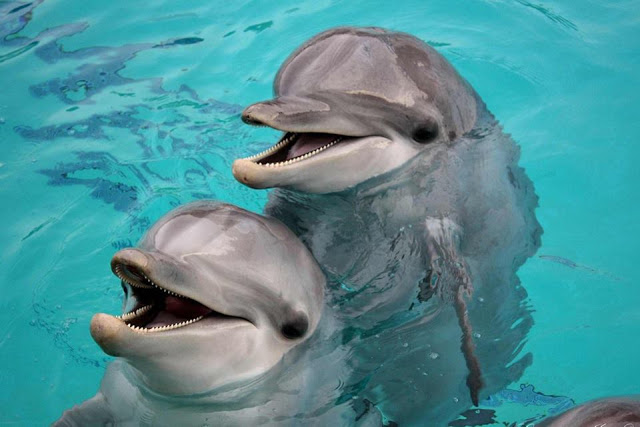
France, 5 November 2016
Action against dolphins in captivity
Today we participated in an action against dolphins in captivity in front of an animal park Planète Sauvage near Nantes. The reason why? Read more here
France, 11 October 2016
Kwik and Kwak, three times lucky
Once upon a time in the West of France there was a very big farm with a lot of little white ducklings. All these ducklings were males and were kept in a muddy field without a lake. Have you already guessed it? France! White ducklings! All males! I am talking about ducks that were destined for the "delicacy" of foie gras.
One day, one of the ducklings found a hole in the fence. He crawled through the fence, followed by a number of his duckling friends and they all fled to freedom. In the nearby village there was a little pond so what did the ducklings do? Of course they instinctively went into that pond, because water means getting clean and being safe. You can imagine the surprise of the pond's owner when in the morning she found it full of little white ducklings. She contacted the authorities who didn't seem very interested. Time passed and no one came to claim the ducklings, but she knew that as they grew she wouldn't have enough room for them so she put an ad on facebook. Result: she found a loving family for all the ducklings, including Kwik and Kwak.
Kwik and Kwak were still very young when they came to us. They were still a bit dirty and they were very scared in the beginning. You could see they were not used to being handled carefully. Petrified they sat in the corner of their house, a chicken house with a small run attached to it. What was quite funny was that they slept in the top part of the chicken house, just like chickens would do. After a while, when they got a bit more used to us, we released them from their small enclosure and they had the run of the garden. They also got a new companion too, Jeanetta the goose. The three were inseparable.
Everything went well for Jeanette and her ducklings, until one night in early spring 2016. They had a visitor: a fox. When I did my rounds early in the morning it was very quiet in the garden. I found Jeanetta first. She was dead and in a very bad state. It was clear that she was killed by a large animal. Franticly I looked for Kwik and Kwak too. I only found Kwik, with blood on his neck and with all his tail feathers pulled out. He was very scared. He would not let me catch him. In the end I had to herd him into a corner and catch him with a fish net. I gave him antibiotics and disinfected the numerous wounds in his neck, underneath his wings and on his back where he had an almost circular hole in his skin about half an inch across.
So that was one. But there was still no sign of Kwak. I looked everywhere, under every bush, in every corner of the garden. I did find the place where the fox would have been able to enter the garden. In despair, but with the hope that he would have been able to escape, I finally gave up my search. These animals are heavy and it is almost impossible for them to fly but I had noticed they could fly just a little. So would he have been able to fly over the fence? I hoped so....
In the meantime Kwik was doing fine. But he was all alone. I called the woman who gave them to us to ask whether it would be better if I gave Kwik back to her as she still had 5 ducks of her own.
But suddenly, three days later, Kwak appeared out of nowhere. He was near the water trough. He was very thirsty and he was very weak. He had an enormous abscess in his neck. It was swollen, to three times its normal size. As he was so weak, it was not difficult to catch him. We went to the vet immediately. He was put on antibiotics, but it was too risky to drain the abscess in his neck. The vet cleaned the dirty and crusty wound, already necrotised in places. It was clear she didn't hold out much hope.
Once back home, it was moving to see how happy Kwik was to find his mate again. We even had the impression they had tears in their eyes. I treated Kwak twice a day. I opened up the little wound in his neck, where he must have been bitten and tried to drain the wound myself. Every other day we went back to the vet for another antibiotics injection. He clearly was improving, though very slowly. His swollen neck, still very stiff, caused him pain while swallowing the food so I had to feed him a paste with a syringe. I made a little film of the feeding. You can see it here on youtube. Even though he became quite skinny and lost quite a lot of weight, he did recover.
It's now 6 months later and he's totally recovered and he has become even more close and attached to us. It's as if he knows and he's grateful that we saved him. We have learned our lesson though. We made a little chalet for them with a small run. During the day they roam free in the garden and every night they sleep safely locked up in the chalet.
Kwik and Kwak were three times lucky: they were born males, so didn't suffer the same fate of most of their sisters who, as they're not useful for making foie gras, are slaughtered soon after birth. They also escaped the horrors of force-feeding and slaughter for foie gras and then survived a vicious attack from a fox.
France, 10 September 2016
Nature abhors a vacuum...
A few years ago, before we started our association NALA in France, a couple of stray cats decided to squat in our barn. They weren't too keen on having contact with us and as they didn't annoy the chickens we left them to their own devices.
A year later there were four as they had a couple of kittens. The next year we discovered a litter of five kittens so realised that we had to take some action. We found out that the SPA was giving out vouchers for the sterilisation of stray cats so contacted them and explained the situation. They agreed to supply vouchers for all the cats: all we had to do was catch them!
Mission Impossible one was Mummy and the kittens: We gathered the kittens and put them in a box inside a large cage. We attached a long length of rope to the door of the cage and installed a video camera. A monitor linked to the camera was hidden around the corner and, with one hand on the end of the rope, we settled down in front of the monitor to await Mummy's return. Sure enough, after a little while Mummy entered the cage to tend to her kittens. A tug on the rope closed the door of the cage and voila we had Mummy and the kittens trapped. We then moved the cage into the house where we had a room prepared for them. As you can imagine, Mummy was not best pleased at this turn of events and made her displeasure known in a quite vocal manner accompanied by teeth and claws. So it was with some trepidation once in the room that we opened the door of the cage. Mummy didn't want to leave the cage immediately so we beat a hasty retreat and left her to her own devices.
When we next entered the room Mummy freaked out and ran around the room like crazy. She even managed to run most of the way up a glass panelled door which is quite an impressive feat. So we just changed the litter tray, put down some food and left. Over the next few days she began to tolerate us and didn't mind when we interacted with her kittens. This was just as well, as we knew that we had to keep them for a number of months until the kittens were big enough to be sterilised.
Meanwhile we had Tommy, the father, Sonny and Ellie to catch and take to the vet. We decided to try to capture them all in one night. So we borrowed a trap from the SPA and bought two more. We set the traps in the early evening and waited for a while before going out to check. Much to our surprise and delight we found one trap occupied by a rather disgruntled Sonny. So we picked up the trap, brought it into the house and put it in the bathroom. A while later we checked the traps again and found that we had caught Tommy, so put him with Sonny. Finally Ellie too entered a trap and joined her family in the bathroom. Job done we thought and went to bed: but not to sleep as the trapped trio treated us to an acapella rendition of "We're unhappy and we want you to know it" all night long.
Come the weary dawn a bleary-eyed, not so dynamic duo loaded the three traps into the car and armed with vouchers from the SPA took the cats to the vet for their operations. All went well, so Tommy, Sonny and Ellie were released back in the barn.
Fast forward five months: Mommy and her kittens were ready for their turn with the vet. By this time, the kittens were completly domesticated and even Mummy had learnt to accept us. In fact they were all so cool, calm and collected, that when we presented them to the vet, he didn't believe that they were covered by the SPA's vouchers and phoned the SPA to check. Once reassured that he would get paid, he took them and carried out the operations.
We had been looking after them for five months and had become quite attached to the kittens. We also realised that they wouldn't thrive if we turfed them out of the house to live in the barn. Therefore we decided to keep three of them while two went to live with family. Mummy was still wild at heart so we let her out of the house and she happily rejoined Tommy, Sonny and Ellie.
All went well for a number of years until we realised that Ellie had disappeared. We never found out what happened to her. Then just before Christmas a couple of years ago Mummy appeared in a very weakened condition with a crushed fore leg. We took her to our favourite vet who managed to save the leg. Unfortunately as it healed it twisted upon itself, so that instead of walking on her toes, Mummy walks on her ankle on that leg. During her convalescence, Mummy stayed in the house with us and became really attached to us. It's just as well, as with her handicap we didn't want to put her back outside. So Mummy became a house cat and integrated well with the others.
Tommy and Sonny stayed as barn cats, completely inseparable. They became more tolerant of us and Tommy especially allowed us to get quite close to him. It was because of this that we noticed that he started to dribble. Rightly concluding this was not a good sign we managed to capture him and take him to the vet. There we discovered that most of his teeth were rotten and that he had a huge infection in his mouth. After an operation to remove the teeth and a course of antibiotics Tommy was as right as rain... or so we thought.
About a year later we noticed that he had a swelling on his jaw. We couldn't get close enough to catch him, so took some photos and sent them to the vet for advice. All she could say was that it didn't look good and that we should bring him in for a closer look. Hmm easier said than done as Tommy was wary of the traps. In fact it took us nearly two months and a number of failures before we managed to catch him and take him to the vet. The vet put him under and examined his mouth. The situation was not good and the prognosis bleak: an inoperable tumour. She gave him no more than six months to live.
In fact it was less than that before we noticed that he was starting to deteriorate. It's always difficult to decide when to take an animal to be put down: not too early, while they're still enjoying life and not too late when they're really suffering. The swelling had continued growing, so remembering that it had taken weeks to catch him the last time, we decided to try to catch him straight away. This time it went smoothly and within days we brought him once again to the vet. Once he was unconscious and on the examining table, Tommy's dire state of health was revealed: the tumour had spread and he only had days, at most, to live. So with heavy hearts we had him put to sleep there and then.
So that left poor Sonny all by himself in the barn while his mother and his siblings lived with us. We decided that the best thing for him would be to catch him and release him in our garden which is surrounded by a fence that stops cats from getting out. That way he could still enjoy an out door life, but also enter the house if he wanted to. That was a couple of weeks ago and although he still hides from us, he gets on well with our cats.
What we have also discovered is that for discerning cats our barn seems to be a very desireable residence. Within days of it becoming vacant, we noticed a slightly tatty ginger and white cat had moved in. So we acted straight away, put out a trap and caught him. A vist to the vet showed that he wasn't identified, so we had him sterilised and brought him home to recuperate. It quickly became apparent that Jahe, as we've called him, must have been a house cat at some stage because he is really friendly although in the beginning he would flinch when we tried to stroke him. Perhaps he was mistreated and then abandoned? We'll never know.
But what really concerns us is how long will it before the next squatter arrives...
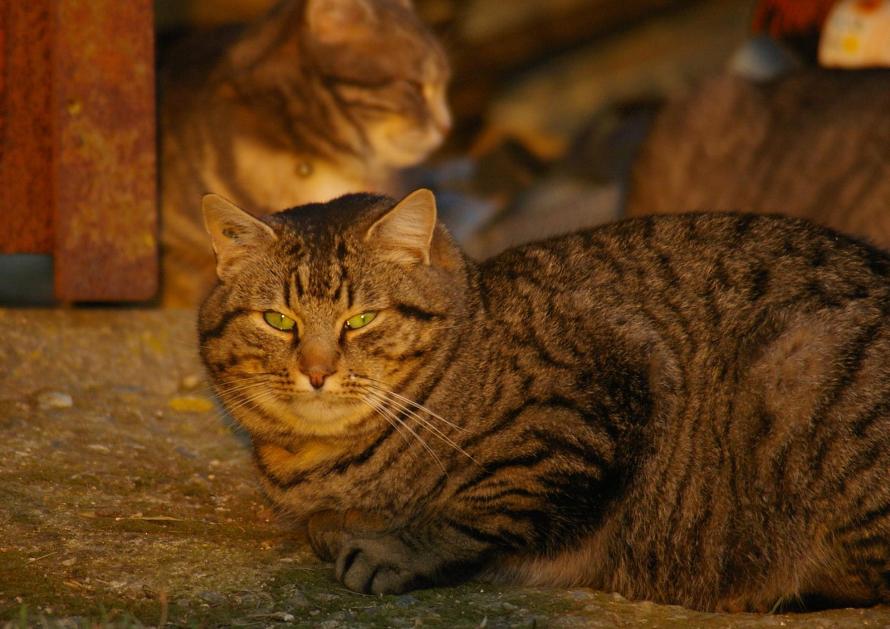
Tommy, Sonny and Ellie (at background)
France, 9 September 2016
Chicken autopsie
Today we have lost one of our rescue chickens due to a fatty liver syndrome and eggs compacted in the oviduct, that didn't want to come out. To avoid laying problems in the past we had her implanted with an Suprelorin implant, which we had to do again 4 days ago but is was already too late. Her general condition and the heat haven't helped her either. You can see the images of the autopsie here (attention very graphic content) .
These birds are bred to lay a lot of eggs in a very short time. Problems with the reproduction system are very common. They also have a very short lifespan. A "normal" chicken under good living conditions can reach an age of 10 if not more. It is our experience that rescue chickens from factory farms don't get any older than 5 years.
France, 27 August 2016
End chaining of dogs in France
Tethering dogs is still allowed in France. Many are forgotten, don't get attention or proper food and suffer incredibly and the authorities don't seem to mind. So we started a petition to prohibit the tethering of dogs. Please sign and share! You'll find the petition (with english translation at the end of the petition) here
France, 16th August 2016
News from our little hedgehog Spikey, saved three days ago
France, 13th of August 2016
A spotlight from the heavens
I've got one of those fitness bands: you know what I mean. It counts the number of steps that you take during a day and nags you every now and again to get up and wander around for a bit. It sets a target of the number of paces every day: if you achieve the target it goes up slightly, if you don't it goes down. I actually quite like it: it gets me out and about in the fresh air. I have a 9km circuit that I do regularly and that's a big chunk of my target.
The other day I spent too much time in the morning and afternoon not moving around, so instead of being able to complete my target with 9kms I needed to do over 10. Luckily there's a loop that's about 800m long that can be added to my usual walk, although I haven't been down it for yonks. So after my basic circuit, I took the loop which is a path shaded by trees: nice and cool and just what I needed with that day's blazing sun. In one place, there was a small gap in the foliage of the trees that allowed the sun's rays to penetrate and create a roughly circular bright spot about six or seven inches across. Slap bang in the middle of this patch of sunlight was a curled up hedgehog no bigger than the palm
of my hand. "That's not good," I thought. Seeing a hedgehog in day time is unusual and normally means something is amiss. In addition, a hedgehog "sunbathing" is probably suffering from hypothermia.
I looked more closely. He didn't respond to a gentle prod and seemed to be breathing too rapidly and shallowly. Definitely not a good sign. So I took off my tee-shirt, wrapped him in it and took him home. Once home I weighed him: 272 grams, which is a bit light. I then put him in a cage with a hot water bottle and gave him a dose of Stronghold for kittens to kill his fleas and other parasites. I also put some cat food in the cage and left him alone.
After a while I came back I noticed that he had crawled onto the hot water bottle. A few hours later when I came to renew the hot water bottle he was a bit more lively and was exploring the cage, but he hadn't eaten.
The next morning his food was still untouched and he was sneezing and coughing, so we contacted the vet and made an appointment.
Wearing massive, thick leather gauntlets, the vet extracted Spikey from his little box and tried to examine him. He was not too thrilled at the prospect so curled up tightly. Eventually he opened up enough for her to see that there was something wrong with one of his eyes, so she decided to knock him out with gas in order to examine him freely. Once he was unconscious, we were able to see that his left eye had been pushed out of its socket and had shrivelled up. This may have been caused by a glancing blow from a bicycle. No matter what the cause, his eye had to be removed and the wound stitched up. So while the vet wielded the needle and thread, I held the tube supplying the gas and Marit took some
photos.
After a shot of antibiotics and an analgesic and a whiff of oxygen to wake him up we took Spikey home and put him back in his cage with some fresh food and water. We were still a bit concerned because he hadn't eaten for so long. Much to our delight, after lounging around on his heated water bed most of the afternoon, Spikey woke up in the evening full of beans. He wandered around the cage and even did some pull ups on the bars before eventually stumbling across the cat food. This he attacked with much gusto, enabling us to heave a huge sigh of relief. It looks like he's on the mend!
The other day I spent too much time in the morning and afternoon not moving around, so instead of being able to complete my target with 9kms I needed to do over 10. Luckily there's a loop that's about 800m long that can be added to my usual walk, although I haven't been down it for yonks. So after my basic circuit, I took the loop which is a path shaded by trees: nice and cool and just what I needed with that day's blazing sun. In one place, there was a small gap in the foliage of the trees that allowed the sun's rays to penetrate and create a roughly circular bright spot about six or seven inches across. Slap bang in the middle of this patch of sunlight was a curled up hedgehog no bigger than the palm
of my hand. "That's not good," I thought. Seeing a hedgehog in day time is unusual and normally means something is amiss. In addition, a hedgehog "sunbathing" is probably suffering from hypothermia.
I looked more closely. He didn't respond to a gentle prod and seemed to be breathing too rapidly and shallowly. Definitely not a good sign. So I took off my tee-shirt, wrapped him in it and took him home. Once home I weighed him: 272 grams, which is a bit light. I then put him in a cage with a hot water bottle and gave him a dose of Stronghold for kittens to kill his fleas and other parasites. I also put some cat food in the cage and left him alone.
After a while I came back I noticed that he had crawled onto the hot water bottle. A few hours later when I came to renew the hot water bottle he was a bit more lively and was exploring the cage, but he hadn't eaten.
The next morning his food was still untouched and he was sneezing and coughing, so we contacted the vet and made an appointment.
Wearing massive, thick leather gauntlets, the vet extracted Spikey from his little box and tried to examine him. He was not too thrilled at the prospect so curled up tightly. Eventually he opened up enough for her to see that there was something wrong with one of his eyes, so she decided to knock him out with gas in order to examine him freely. Once he was unconscious, we were able to see that his left eye had been pushed out of its socket and had shrivelled up. This may have been caused by a glancing blow from a bicycle. No matter what the cause, his eye had to be removed and the wound stitched up. So while the vet wielded the needle and thread, I held the tube supplying the gas and Marit took some
photos.
After a shot of antibiotics and an analgesic and a whiff of oxygen to wake him up we took Spikey home and put him back in his cage with some fresh food and water. We were still a bit concerned because he hadn't eaten for so long. Much to our delight, after lounging around on his heated water bed most of the afternoon, Spikey woke up in the evening full of beans. He wandered around the cage and even did some pull ups on the bars before eventually stumbling across the cat food. This he attacked with much gusto, enabling us to heave a huge sigh of relief. It looks like he's on the mend!
